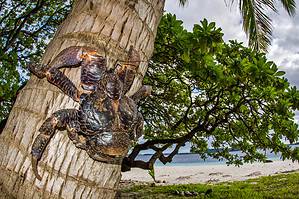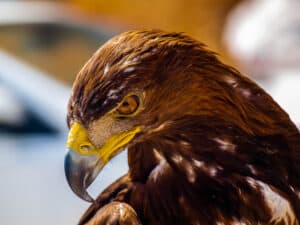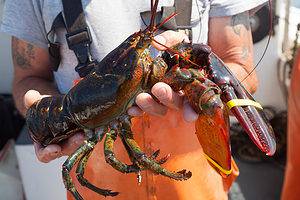Florida is a diverse state with lot’s of different animals, including sand fleas. But did you know there are many animals with this same name? Sand fleas can refer to mole crabs, gnats, or sand flies. Rarely does this word, though, refer to a jumping, biting, and sucking flea.
Read on to discover more about sand fleas in Florida, how to find them, how to avoid them, and more!
Types of Sand Fleas in Florida
There are two types of sand fleas in Florida; mole crabs and biting midges, also known as sandflies.
Mole Crab
On your next trip to a Florida beach, pay close attention to the surf, where you might spy some wiggling sand fleas! There are two types of mole crabs in Florida: Emerita talpoida and Emerita benedicti. They are sometimes referred to as sand fleas or sand lice, but they don’t bite or suck blood. Instead, they burrow into the sand to feast on plankton and hide away from common predators. Mole crabs have thick sand-colored exoskeletons that can deflect the force of a wave. They also have five sets of legs on their underside which they tuck in close together when a wave comes crashing in. These legs also help them to move backward and dig with their telson, a V-shaped digging tool. Mole crabs live between 2 to 3 years.
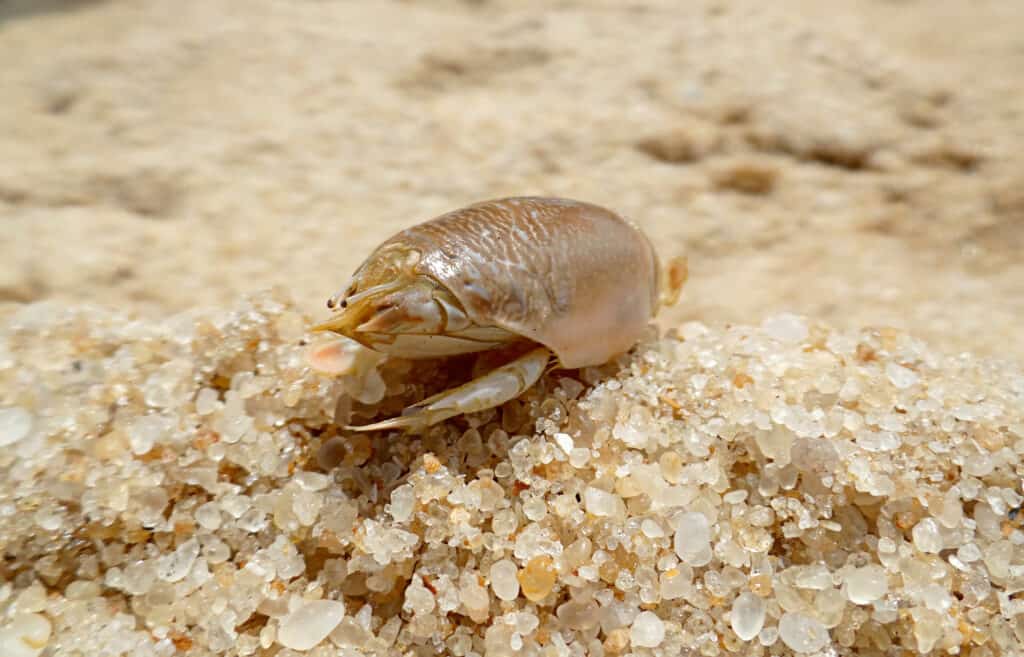
Mole crabs have thick sand-colored exoskeletons that can deflect the force of a wave.
©iStock.com/Vinicius-Moreira
Biting Midges/Sandflies
Despite having the same nickname, biting midges, from the family Ceratopogonidae, and mole crabs don’t share many similarities. Biting midges are also known as sandflies, or more appropriately, no-see-ums. They are tiny pests, common in Florida, that actively look for humans and animals off of which to feed. They rarely grow beyond 1/8th of an inch long. A sandfly’s bite will result in little red bumps which can sometimes develop into welts or rashes. They are especially common along the coasts and on beaches, which is why they are called sandflies. Only female sandflies bite and drink blood and they carry many eggs. The eggs hatch within 3 to 5 days at 80°F. The more blood a female biting midge drinks, the more eggs she will produce. Biting midges are most active in Florida during March and April. This is when the weather begins to warm up and it is raining frequently. Sandflies are attracted to wet and humid conditions, especially wet sands and mud.
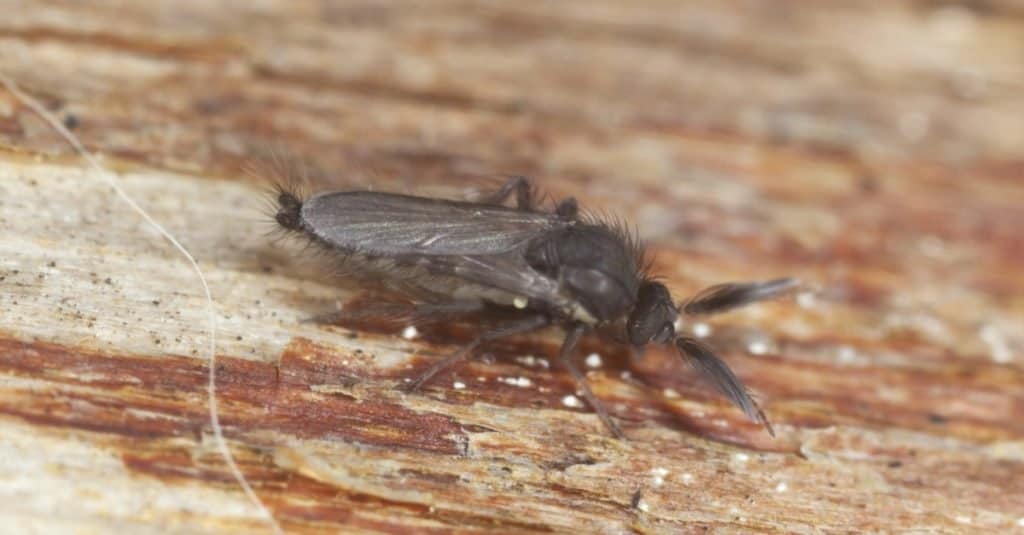
Biting midges are most active in Florida during March and April.
©Henrik Larsson/Shutterstock.com
When is the Best Time to Look for Sand Fleas (Mole Crabs) in Florida?
You won’t want to actively search for sandflies, and you won’t have to: If they’re around, they’ll find you! However, mole crabs, which are a bit more timid, can be harder to find. They are common on Florida beaches, especially in the surf. September through November and early March through May, when they are most plentiful, are the best times of the year to search for these tiny crustaceans. Regardless of the time of year, you can find mole crabs along the surf. To look for mole crabs, you can use your hands or a rake. Anglers commonly catch mole crabs for bait, however, you can cook and eat them, too! Mole crabs are available in most Florida bait shops, and can be purchased either fresh or frozen!

Anglers commonly catch mole crabs for bait however, you can cook and eat them, too!
©Reezky Pradata/Shutterstock.com
How do you prevent sand flea bites at the beach?
Mole crabs don’t bite or sting, but the sand fleas, also known as biting midges do. Their bite can leave red marks on your skin which can be very itchy and uncomfortable. It’s a lot easier to prevent sand flea bites at the beach in Florida than treat the bites afterward. Using sunscreen or bug repellent that contains lemon and eucalyptus can help keep midges at bay. Coconut oil s another deterrent, since it’s slippery and hard for bugs to land in! Sandflies also prefer flying and feeding at dusk and dawn, when the weather is cooler.

Midge bites can leave red marks on your skin which can be very itchy and uncomfortable.
©Andrew Atkinson/Shutterstock.com
Going to the beach during the warmest part of the day will make it unlikely that you will encounter these flying and biting pests. You can also cover up your arms and legs by wearing waterproof and light clothing. Florida can get very hot during summer, so to keep cool while covering up, choose light and flowing clothing that won’t trap the heat. Another good way to avoid be bitten by sandflies is to get away from their hunting ground: the sand. If possible, don’t lie or sit directly in the sand. Beach towels and beach chairs will help keep you out of harm’s way.
So, when you visit Florida’s famous beaches, remember that the surf is the best place to find the sand fleas known as mole crabs. Also bear in mind that dusk and dawn are the most likely times to be bitten by the sand fleas we call midges and plan accordingly!
Up Next:
- The Different Ways Dogs Get Fleas (And How to Get Rid of Them)
- Fleas vs. Ticks: What Are Their Differences?
- Do Fleas Die in the Winter?
The photo featured at the top of this post is © iStock.com/Jaimie Tuchman
Sources
- url.edu, Available here: https://blogs.ifas.ufl.edu/escambiaco/2021/09/01/weekly-what-is-it-sand-fleas-mole-crabs/
- ufl.edu, Available here: https://edis.ifas.ufl.edu/publication/MG102
Thank you for reading! Have some feedback for us? Contact the AZ Animals editorial team.




